Memory Monday: Puerto Rican Deaths and Fifth week of May 1918
by meep
A tweet went out this weekend regarding excess deaths from the Hurricanes hitting Puerto Rico in 2017.
After an OCR screw-up making my January numbers wrong (8s were being turned into 3), I made a spreadsheet and these two graphs:

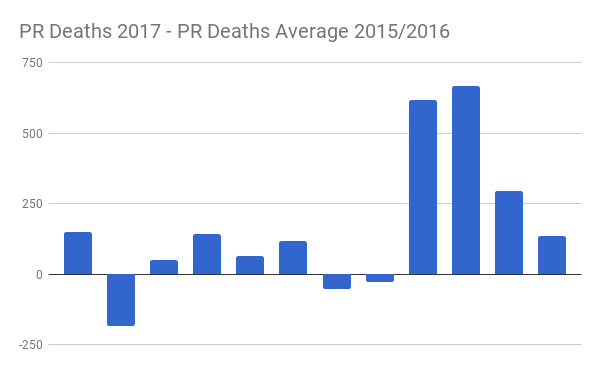
So that gives you an idea of “excess deaths” – obviously in January through August, you’re mainly seeing normal variability in death counts. But when you get to September and October, you’re definitely seeing “excess deaths” – i.e., those which were caused by the hurricane.
I had seen some dumb news stories (nope not linking them) where they simply added up all the deaths in those months and blamed them on the hurricane. Uh, no. About 2300 people die per month even absent hurricanes.
Just adding the September -> November numbers (I believe some of the December excess is from the bad 2017-2018 flu season), I get about 1600 excess deaths due to the hurricanes in Puerto Rico.
Anyway, a similar thing for when I start seeing Spanish flu-related stories. Enough people died from it, that I should see some indication of excess deaths — too many deaths, and at the “wrong” ages.
In the fifth week of May 1918, I didn’t see any suspicious deaths in the Brewster Standard (though they did mention whooping cough going around), so let’s see what else was in the paper.
BUY A FLAG
So Memorial Day is already passed at this point – both in 2018 and in 1918.
But Independence Day is coming up… and Flag Day. You need a flag!
Let’s see what flags cost back in 1918:
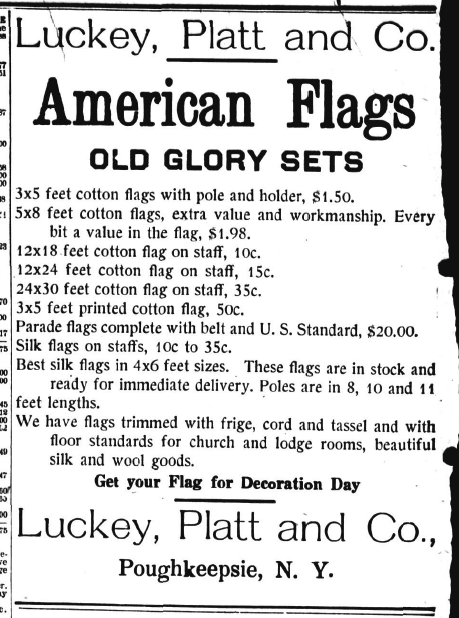
And let me check out a selection at Amazon:
This page has lots of different choices.
10 foot by 15 foot for $100:
8 by 12 foot for $60:
1 by 1.5 foot for $10:
The materials are a bit different, but they’re all quite affordable.
BUY WAR STAMPS
The usual:
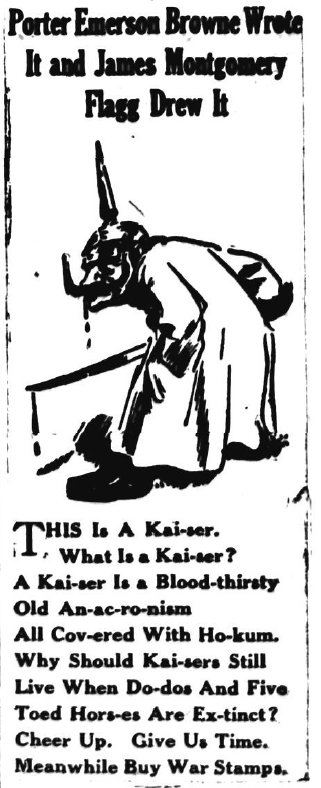

I wonder how effective these nags were.
And what people thought in 1933, when FDR had the country essentially default on some of the bonds issued in WWI:
The 1933 default episode
This takes us to Franklin D. Roosevelt in 1933. Much like President Obama, Roosevelt found the economy in shambles. He, too, had to take a lot of emergency actions, some orthodox, others not so much.
One of the more unorthodox actions related to U.S. government bonds issued many years earlier. In 1917, after entering World War I, the U.S. Congress passed the First and Second Liberty Bond Acts.
In fact, it is the Second Liberty Bond Act that is widely considered the legislative root of today’s debt ceiling. This measure allowed the U.S. Treasury to issue long-term and short-term debt up to a certain limit — rather than seeking, as was previously required, specific Congressional authorization for each borrowing transaction.
These Liberty Bonds (more were issued in 1918 to prosecute the war) also included a gold clause. This clause required that redemptions of these bonds were to be made in gold. However, outstanding Liberty Bonds were far in excess of the country’s gold reserves.
Upon President Roosevelt’s request, Congress passed a “Joint Resolution to Assure Uniform Value to the Coins and Currencies of the United States.” This had the net effect on reneging on the government’s obligation to make payment on Liberty Bonds in gold.
Such subsequent restructuring of a contractual debt agreement would constitute a default by today’s definition. In fact, four legal cases made it to the Supreme Court.
In February 1935, the Supreme Court deemed the congressional resolution as constitutional in a 5-4 decision. Chief Justice Charles Evans Hughes, who wrote the majority opinion, described the resolution as “immoral” but legal.
Yup, reneging on the debt is morally wrong…. and governments do it all the time.
BE PATRIOTIC. STOP READING GERMAN
This was printed in the paper:

My section of the town was founded by a bunch of German-speaking inventors (they escaped Europe after the revolutions of 1948). Some may still have been reading German at that point, though it had been several generations. Obviously, a lot more German-speaking and -reading folks came in the late 19th century and early 20th.
I can imagine the Germans in the U.S. were none too pleased with the Kaiser… especially if the reason they came to the U.S. in the first place was the Kaiser.
ON AGRICULTURE
Farmers lacking men to work the fields:
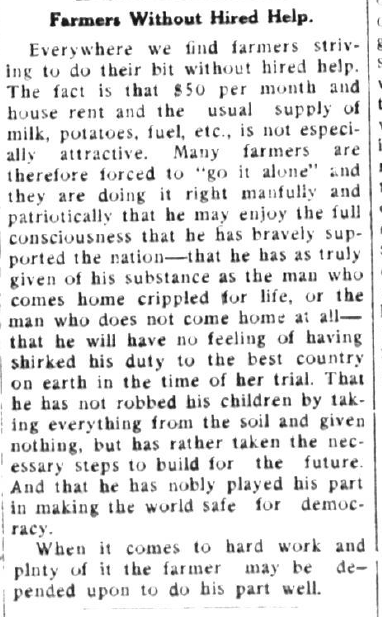
Eat your potatoes before they go bad:

NEW YORK SERVICEMEN
Here is a count on NY servicemen:
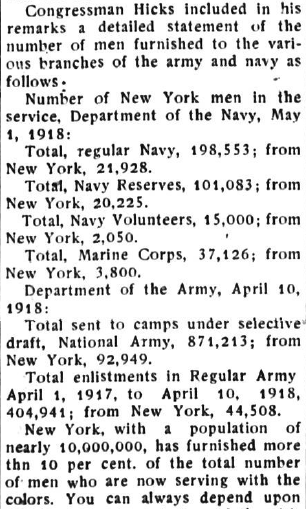
Obviously, as NY was the most populous state then (and had been for some time) – it wasn’t surpassed by California until the 1960 census, and air-conditioning really helped Texas take off, too. (Texas didn’t surpass New York until the 2000 census).
NEW TECH
Check out this fancy ambulance:

INSURANCE FOR SERVICEMEN
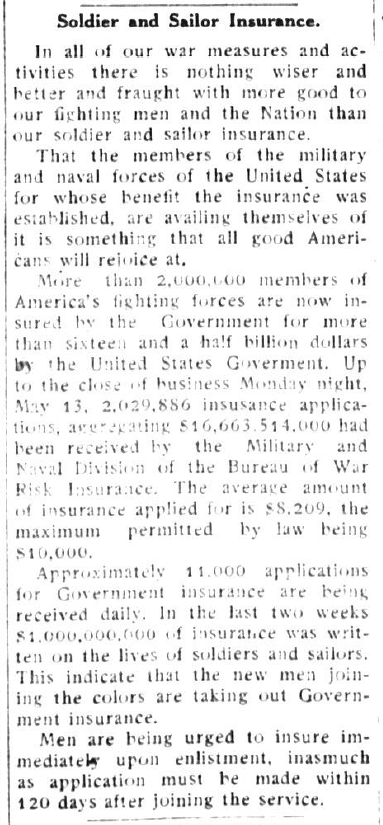
There is a mutual insurer geared towards serving the U.S. armed forces, and it was founded in 1922, after WWI.
USAA was founded in 1922 in San Antonio, Texas, by a group of 25 U.S. Army officers as a mechanism for mutual self-insurance when they were unable to secure auto insurance because of the perception that they, as military officers, were a high-risk group.89 USAA has since expanded to offer banking and insurance services to past and present members of the Armed Forces, officers and enlisted, and their immediate families.
June will be busting out all over next week – see you then!
